By: Diane Kashin, Ed.D, RECE. and Nicole Pierce RECE.
In the time of COVID as children return to early learning environments after being in isolation in their homes, how will they feel? Will children feel a sense of belonging in this new normal of physical distancing, mask wearing, toy sanitizing and hand washing? They will if they feel that they are in third spaces that welcome them as members of a community. The concept of a third space is one that is distinct from the home (first space) or work (second space). Third spaces are the in-between spaces, where the first and second spaces work together to generate a new space that is communal. Bringing shape and life to the space shared by children and educators can be accomplished with rituals and traditions. Historically, rituals have been important to every culture. They have been the glue that connects families and helps them through challenging times (Howell & Reinhard, 2015). The pandemic of 2020 has produced challenges for everyone. As educators return to the classroom, rituals and traditions are more important than ever! This book written by Jacky Howell and Kimberly Reinhard suggests that the impact of creating rituals and traditions is long-lasting. “They create a safe, warm and secure environment where children are able to learn and grow” (p. 1). This is what we want for children, now more than ever.
This is a stressful time. Rituals and traditions can support children and educators as they navigate the COVID world. Rituals and traditions unite and connect. Rituals and traditions create memories and strengthen bonds. Rituals and traditions support a sense of belonging and the building of a strong community or third space.
Rituals are different than routines. A routine can become a ritual. Early childhood routines can be arrival and departure times, handwashing, snack time and mealtimes, diaper changing and nap time. Routines are repeated, predictable events that are planned parts of the day, week or month. According to Gillespie and Peterson (2012), rituals are “intentional ways of approaching a routine, with careful consideration of the needs of the individual within the routine” (p.77). They are a way of connecting on a deeper level with families and their children. They are a way to create secure environments that nurture relationships. The following chart adapted from Howell and Reinhard (2015) illustrates the differences between routines, rituals and traditions.
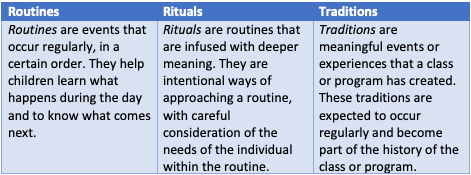
When our family business reopened in June, my son who is the manager returned to work. With child care centres in our province closed at the time, he needed care for his 3.5-year-old son. This is my COVID gift. I get to be with Griffen on a daily basis. To help with the routine of arrival time, every day, Griff and I go through a list of play possibilities and daily routines that I have created based on his interests and needs. This planning helps to frame the day and creates a sense of belonging and well-being as he becomes empowered to co-construct our time together. The list has become a ritual. While it helps to frame our day it also gives me an opportunity to share some of my favourite things with him like buttons and agates!
Now in the time of COVID, creating rituals and traditions will “provide an opportunity to connect in meaningful ways that children, families, and teachers may remember for years to come” (Howell & Reinhard, 2015. 2015, p. 97). It may be something that you have not thought about before. My friend, Nicole, has been thinking about ritual for a while now. Nicole is a registered early childhood educator who works with toddlers at the Seneca College, Newnham Campus Labschool. I have asked her to share her experiences here. I know they will inspire you as they have inspired me!

Over the last year and a half before the Lab School closed due to COVID-19, my partner Areeba and I have been reflecting on routine moments that held deep meaning for us as a toddler community through this new lens of ritual. We began to notice that we have been creating rituals that are sacred to us as a community of children, educators and families, for years without realizing it. While considering which to share here, there were several that rose to the front of my mind and heart. The first is a community ritual shaped between the children, educators and the sun, through the disco ball that hangs in one of our classroom windows.
This disco ball has long been a source of wonder, light, and magic; what one of the toddlers a year ago named the “Sunshines”. The spots of light that magically appear and dance all around the room when the sun hits the ball at just the right angle through the window, holds a special place in our hearts, as well as a very special feeling and importance in our day as a community. In the fall, these “Sunshines” don’t appear for most of the day. However, at around 10:00/10:30 am on most days, as the sun rises over the residence building behind our playground, the sun finally touches the ball and these beautiful dancing lights are cast all around the room, as if by magic. It is a moment, where the whole room tends to stop, to pause, to take a collective breath in awe and wonder at these “Sunshines” together. Sometimes for a brief moment, sometimes for a while, but always together. These “Sunshines” have the innate ability to radiate a sense of wonder, joy, and a reason to come together. This tends to coincide with the time we usually are ready as a group to begin winding down to head outside, and so the ritual of coming together in this magical moment offered to us by the sun has replaced the routine of relying on the clock to tell us when to stop what we are doing, tidy up and go outside. Instead, we live in this ritual, a dance between us and the sun, calling us to pause, slow down, connect and come play, together, as one community.
Another ritual that comes to mind is a ritual that was developed between me and one of our toddlers when picked up at the end of the day. We usually would wave, blow a kiss and say “bye bye” or “good-bye” as they went to leave. However, all of a sudden, this speaking of the words “good-bye” would cause the child to begin to cry and get quite upset. We took some time to discuss with Mom if anything had changed, and it turned out that the child’s grandparents who had been visiting from China had gone back home. This time saying “good-bye” didn’t mean they would be back again soon as it had for so long. Dad too lived in China, and she continued to describe how upset the child began to get whenever Dad said “good-bye” on a video call, with the child beginning to realize that “good-bye” in these cases can mean it may be a long time before we see each other again. So we developed our own “good-bye” ritual, making the choice to no longer say those words but instead to end each day by saying “see you tomorrow” (or see you on Monday if it was a Friday), which the child would repeat, followed by me saying, “明天见 (Míngtiān jiàn)” (meaning “see you tomorrow” in Mandarin) which the child would also repeat, and then we would hold our hands up as though about to blow a kiss, but pause, jokinly hesitate, and then blow three kisses, “Muah, Muah, Muah!”. This end of the day ritual was always followed by smiles and giggles from both of us and become a very important and meaningful part of our day. So strong was this ritual, and so strong was the bond it helped us from with one another, that even after the child went to the preschool room, we would still seek each other out whenever one of us was leaving for the day (even a year later), to perform this end of the day ritual. Strangely, or perhaps not strangely at all, this is one of the things I remember and miss most vividly during this time away from the children, because of COVID-19. Our last “see you Monday” lingers unfulfilled, a ritual, a promise we made to one another, broken across time and space due to circumstances beyond our control. We have seen each other on a Zoom call, though wonderful, is still not the same, and the ritual didn’t resonate the same when we were ending the group call, as it did between the two of us at the end of each day in person. I wonder if this ritual lingers in the child’s mind and heart the way it does in mind, longing to be repeated when we do finally get to see each other once more.
Many other moments we spend together in our toddler community have been transformed from routines to rituals through our intentional practice. Those rituals have become even deeper and more meaningful when we transitioned our thinking, into focusing on them as sacred moments between us; the educators, children, families, bugs, birds, trees, sun, water, all the beings that make up our community at the Lab School. The more we began to see these moments as possible rituals, the more intentionally we established them as such. The more we practised these rituals, the more they transformed into traditions and were repeated with new groups of children without us choosing to teach them; the rituals just became a part of the culture of our community. They live in the space and the children pass them on to new children as they enter, the sun calls to us through the disco ball without us needing to initiate the ritual. The children who have recently joined the community feel it’s pull as much as those of us who have now lived with this ritual for years.
It simply, yet complexly, took us slowing down enough to notice that these rituals already existed but passed by as routine moments because we didn’t give the amount of intention and attention needed to make that shift before. Casper Ter Kuile describes in his book, The Power of Ritual: Turning Everyday Activities into Soulful Practices, that for something to truly become a ritual it requires “intention, attention and repetition” and he has “come to believe that just about anything can become a spiritual practice” or ritual. What happens when we allow ourselves to view the time we spend together with children as a spiritual practice? What deeper meaning and sense of belonging and connection can it conjure in not only the children but us as well? Casper also reminds us that “we are all inherently born into belonging” and that rituals, or turning mundane secular moments into spiritual practices, can be “tools to help us remember.” In the time of COVID we are so disconnected from one another, perhaps feeling less of that sense of belonging and community that we have been able to awaken in ourselves before. These moments of ritual can be just that, “tools to help us remember”, that we ARE connected, we DO belong, and we CHOOSE to belong here, now, together in this community. We ARE awakening once more as we return to spaces with children, families and each other.
Nicole and I are also very excited to be offering a webinar on the topic of rituals and traditions on August 19th, 2020 at 7:00 pm EST. Please join us! This will be an opportunity to dialogue and share our own rituals and traditions. We also invite you to comment below to share with the readers how rituals and traditions have impacted your practice and life.
Our individual lives are ordered and made meaningful with daily [routines] … the first cup of coffee, goodbye kisses, routes taken to school or work … Ritual joins routine and the physical order as the secure skeleton that holds individuals and groups together in those times of stress, against the uncertainties of teachers and children who come and go … These [rituals] are marked by symbolic acts that have great meaning and emotional power. Group daily rites [rituals] – i.e., sharing the same song and the same story day after day – reassure against the unknown void. Individual rituals between children and caregivers can become pinions of security – a special touch, a shared joke, any regularly shared exchange (Greenman, 1988, p. 122).

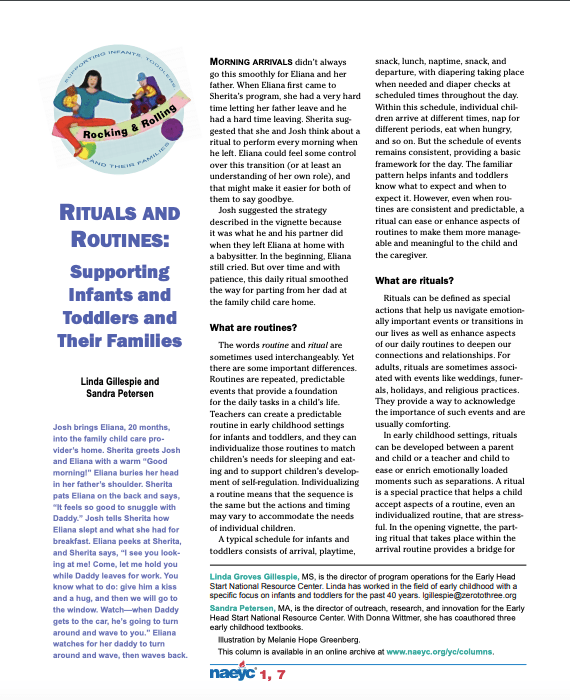
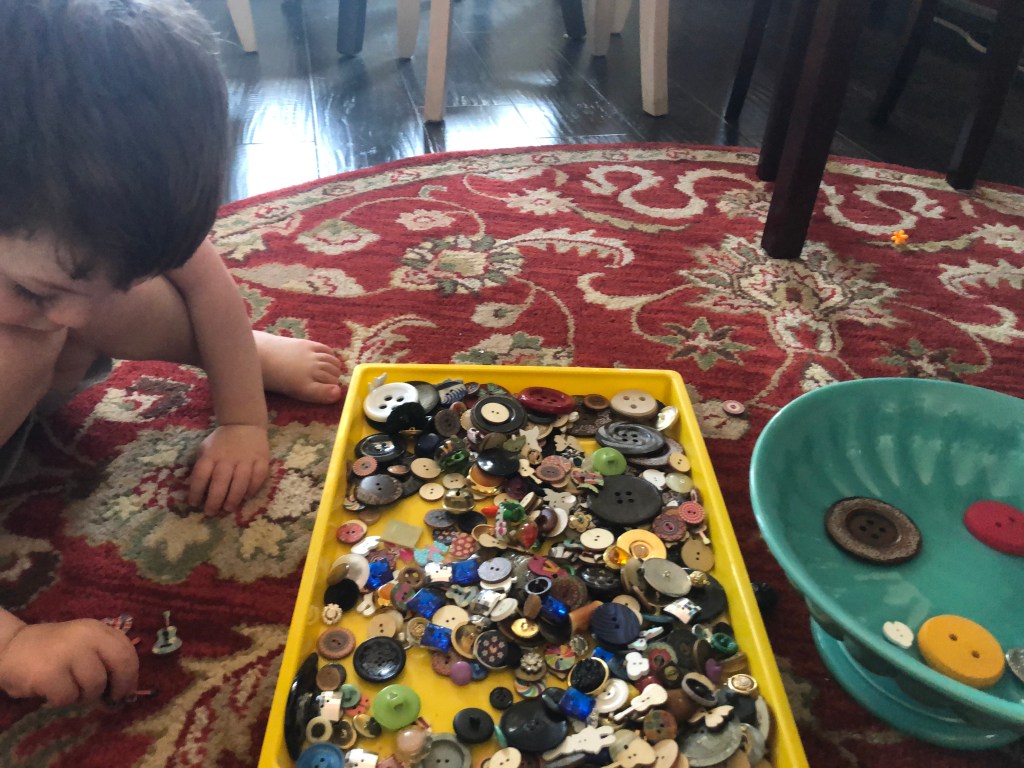


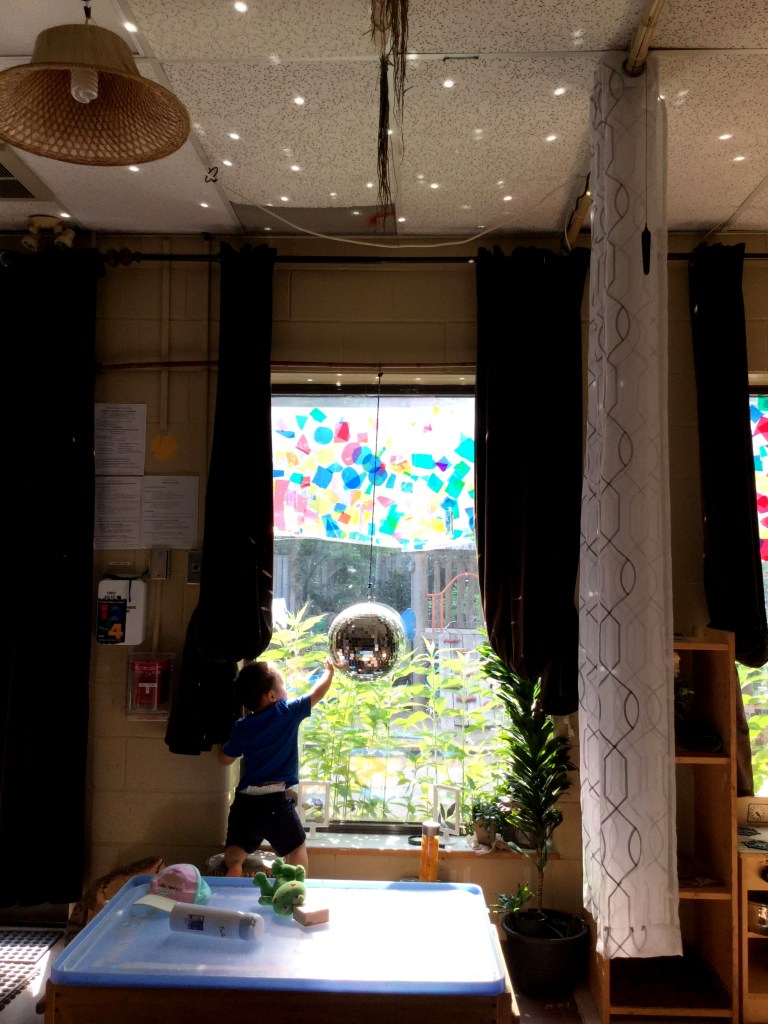

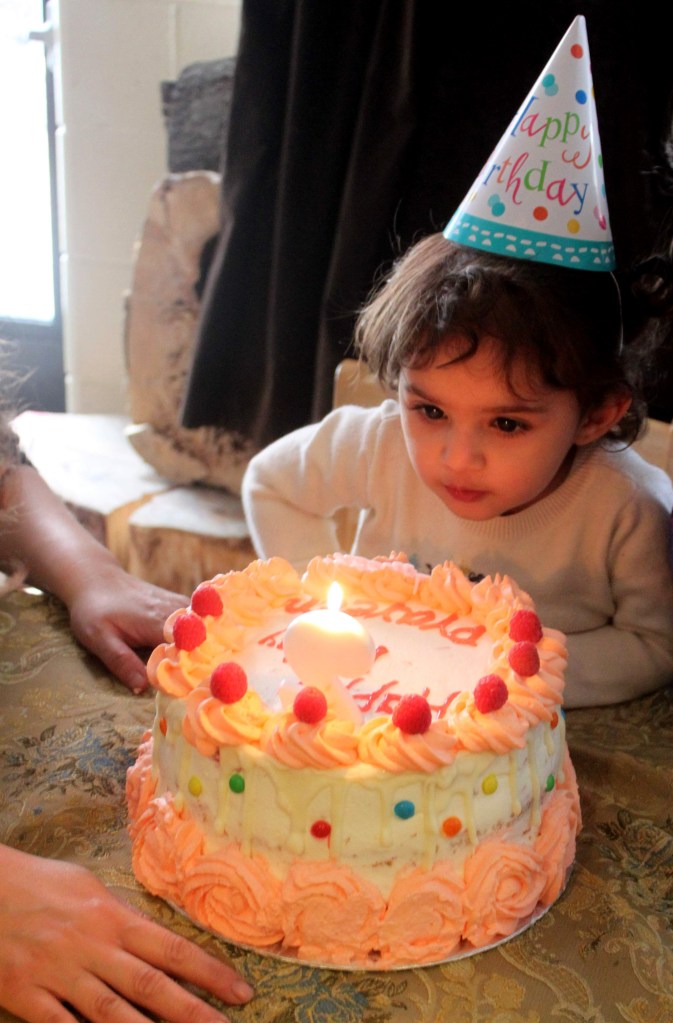
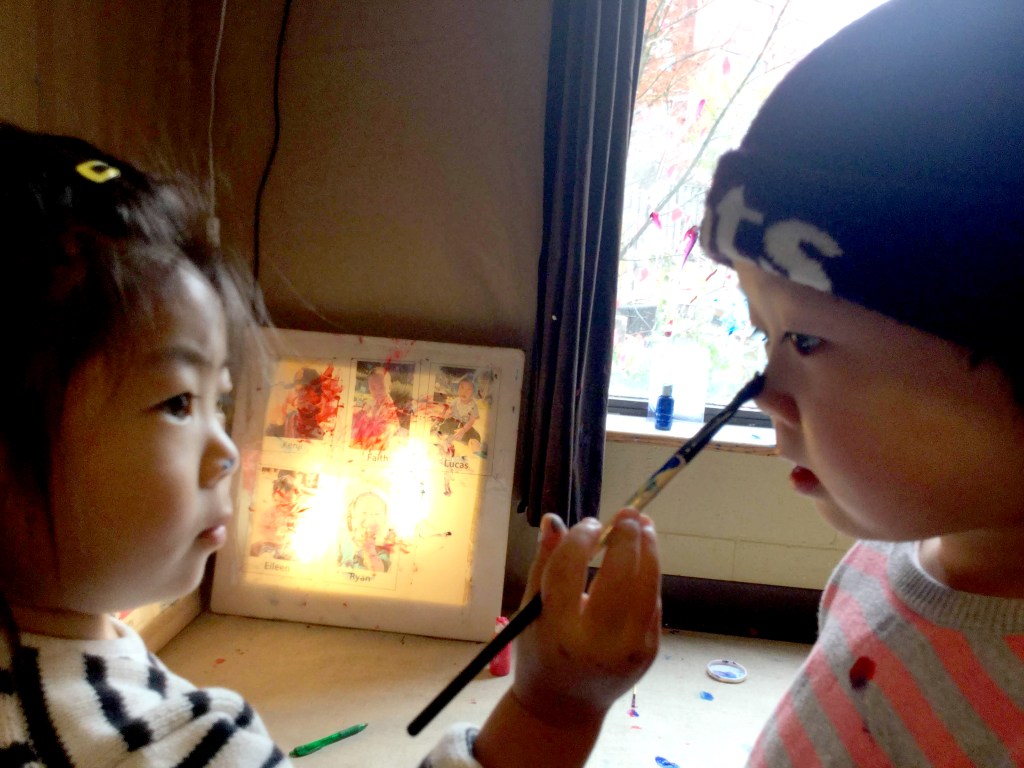

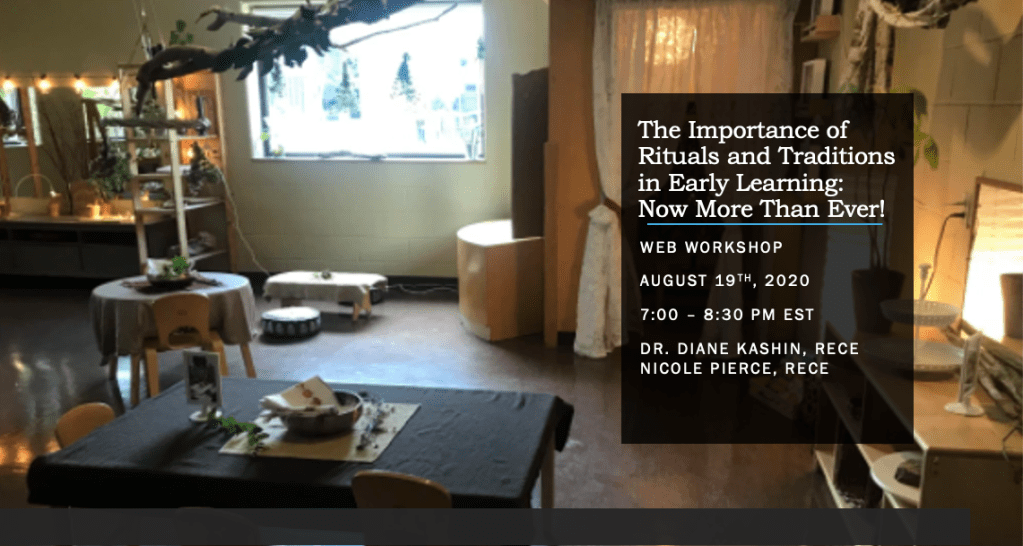
HI-if we pay to listen and something prevents us from signing in does a recording get sent out?
________________________________
LikeLike
Yes!
LikeLike
yes, yes. these are so important
LikeLiked by 1 person
Reblogged this on Vawnshare and commented:
Prior to COVID-19 in classrooms all around the World Children said (at the end of the day) Goodbye
Now this simple little word has taken on a life of its own and quite frankly can cause trauma emotional upheavals behaviour all as well just something to note as you’re going back in to where you work
LikeLike
love this
LikeLike
I am reminded again of the beauty and wonder of what we do. Thank you for putting into words something I hold so deeply in my heart.
LikeLike
Pingback: Singing with Children During Difficult Times | Technology Rich Inquiry Based Research